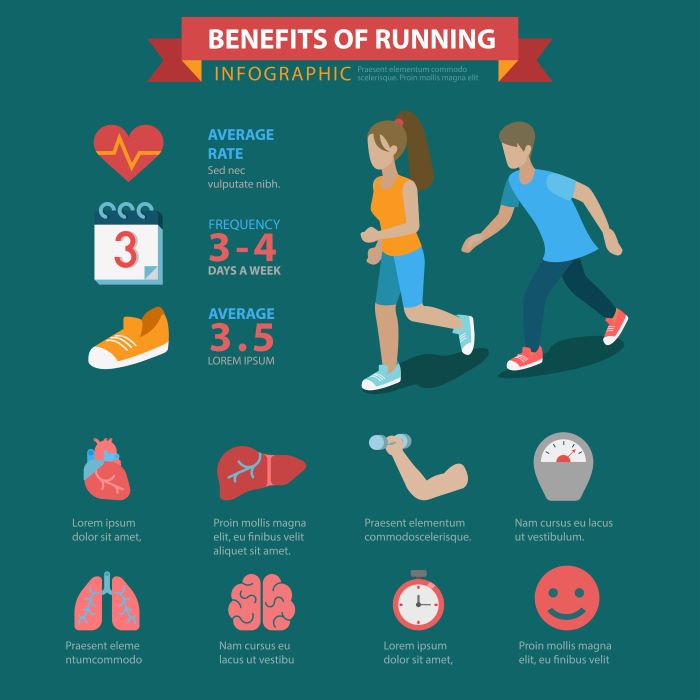For any aspiring distance runner, understanding the significance of tailored workouts is essential for achieving optimal performance and endurance. Distance running is not merely about putting one foot in front of the other; it involves a strategic approach to training that focuses on building stamina, strength, and mental resilience.
Incorporating the best running workouts for distance runners into your routine can yield significant benefits, such as:
- Enhanced Endurance: Through specific workouts like long runs and tempo sessions, you can gradually increase your mileage, allowing your body to adapt to longer distances.
- Improved Speed: Interval training and hill workouts are crucial for developing your speed and efficiency, enabling you to maintain a faster pace over longer distances.
- Injury Prevention: A well-rounded training program that includes strength training, flexibility exercises, and rest days helps reduce the risk of injuries, keeping you on track for your goals.
- Mental Toughness: Distance running is as much a mental challenge as it is a physical one. Structured workouts can help you build the mental stamina required to push through tough runs and races.
By focusing on these key elements, you can unlock your potential as a distance runner. Visit our website to learn more and get started today! Click here.
Key Components of Effective Distance Running Training
Effective distance running training hinges on several key components that work together to enhance performance, build endurance, and prevent injuries. Understanding these elements can help you create a balanced training plan tailored to meet your individual needs and running goals.
Here are some of the fundamental components to consider:
- Base Mileage: Establishing a solid base mileage through consistent weekly runs allows your body to adapt to the physical demands of distance running. Gradually increasing your mileage each week will build the necessary endurance.
- Speed Work: Incorporating speed workouts, such as intervals or fartlek training, helps improve your running efficiency and overall speed. These workouts should focus on shorter, faster bursts followed by recovery periods.
- Long Runs: Long runs are critical for building endurance. These sessions should be done at a comfortable pace, allowing you to accumulate mileage and prepare your body for race day.
- Cross-Training: Engaging in cross-training activities, such as cycling or swimming, can help improve cardiovascular fitness while reducing the risk of overuse injuries. These activities can also provide a break from running while still maintaining your fitness levels.
- Rest and Recovery: Rest days are vital for muscle recovery and injury prevention. Listening to your body and incorporating rest days into your training plan will ultimately enhance your performance.
By focusing on these key components, you can design a comprehensive and effective training plan that supports your journey as a distance runner.
Top Running Workouts to Enhance Endurance and Speed

To become a more proficient distance runner, incorporating specific workouts that target both endurance and speed is essential. These workouts not only enhance your physical capabilities but also add variety to your training routine, keeping you engaged and motivated. Here are some of the top running workouts designed for this purpose:
- Tempo Runs: These runs are performed at a steady, challenging pace, typically near your lactate threshold. They help improve your ability to sustain faster paces over longer periods. Aim for 20 to 40 minutes at this tempo pace, followed by a warm-up and cooldown.
- Interval Training: This workout consists of alternating between high-intensity running and recovery periods. For example, sprint for 400 meters followed by a 200-meter jog. Repeat this cycle several times. Interval training builds speed and boosts cardiovascular fitness.
- Hill Repeats: Running uphill is a fantastic way to increase strength and power. Find a hill and sprint up for 30 seconds, then jog or walk back down for recovery. Repeat this process multiple times. Hill repeats help improve your running economy and leg strength.
- Long Runs with Pick-ups: During your long runs, incorporate short bursts of faster running every 5 to 10 minutes. This not only breaks up the monotony but also helps train your body to finish strong in races.
- Fartlek Training: This Swedish term means “speed play.” It involves varying your pace throughout your run, mixing sprints with slower recovery periods. Fartlek workouts can be done on any terrain and are excellent for building both speed and endurance.
Incorporating these workouts into your training regimen will help you achieve a balance of endurance and speed, setting you up for success on race day.
Incorporating Cross-Training into Your Running Routine

Integrating cross-training into your running routine is a powerful strategy for enhancing overall performance and reducing the risk of injury. This approach allows you to develop different muscle groups, improve flexibility, and maintain cardiovascular fitness while giving your running muscles a break. Here’s how to effectively incorporate cross-training into your regimen:
- Choose Complementary Activities: Opt for low-impact exercises such as cycling, swimming, or elliptical training. These activities provide a cardio workout without the same level of stress on your joints as running.
- Strength Training: Incorporating strength workouts focusing on core, legs, and upper body can significantly enhance your running performance. Aim for two sessions per week, using exercises like squats, lunges, and deadlifts to build strength and power.
- Flexibility and Mobility Work: Adding yoga or Pilates to your routine can improve flexibility and balance, essential for preventing injuries. These practices also promote recovery and relaxation, which are vital for any runner.
- Cross-Training Schedule: Design a weekly schedule that incorporates cross-training. For instance, after a long run, you might choose to swim or cycle on the following day. This way, you maintain fitness while allowing your body to recover.
- Listen to Your Body: Pay attention to how your body responds to cross-training. If you feel fatigued or experience any discomfort, adjust your activities accordingly. The goal is to complement your running, not overexert yourself.
By strategically incorporating cross-training, you can maximize your running potential, improve your performance, and enjoy a more well-rounded fitness journey.
Nutrition Tips for Distance Runners to Fuel Performance

Proper nutrition plays a critical role in optimizing performance for distance runners. Fueling your body with the right nutrients can enhance endurance, speed recovery, and promote overall health. Here are some essential nutrition tips to keep in mind:
- Carbohydrate Intake: Carbs are the primary source of energy for runners. Aim to make 45-65% of your daily caloric intake from carbohydrates, focusing on whole grains, fruits, and vegetables. These foods provide the necessary glycogen stores to sustain long runs.
- Protein for Recovery: Incorporate adequate protein to support muscle repair and growth. Consuming 15-25 grams of protein within 30 minutes after your run can enhance recovery. Good sources include lean meats, dairy, legumes, and protein shakes.
- Healthy Fats: Don’t shy away from healthy fats, which are essential for overall health and can help with endurance. Include sources such as avocados, nuts, and olive oil in your diet. Fats should make up about 20-35% of your daily caloric intake.
- Hydration: Staying hydrated is vital for performance. Drink water throughout the day, and consider electrolyte-rich drinks during long runs. A general guideline is to drink about 17-20 ounces of water 2-3 hours before running and 8 ounces 20-30 minutes prior.
- Pre-Run Nutrition: Fuel your body with a light snack rich in carbohydrates and some protein about 30-60 minutes before running. Options like bananas, oatmeal, or yogurt can provide a quick energy boost.
By focusing on a balanced diet tailored to your running needs, you can significantly enhance your performance and recovery, paving the way for long-term success in distance running.
Join a Community for Support and Motivation in Running

Running can often be a solitary endeavor, but joining a community can drastically enhance your experience, providing support and motivation that can propel you to new heights. Being part of a vibrant running community offers numerous benefits that can help you stay committed to your training and achieve your goals.
- Accountability: When you join a community, you become part of a group that encourages each other to stay on track. Knowing that others are counting on you can be a powerful motivator, helping you to stick to your running schedule.
- Shared Experiences: Connecting with fellow runners allows you to share experiences, tips, and advice. This exchange of knowledge can help you overcome challenges, avoid common pitfalls, and discover new techniques to improve your performance.
- Mental Boost: Running can be a mental challenge, especially during tough training phases. Having a community to lean on can provide the emotional support needed to push through those difficult moments. Whether it’s a friendly chat or an inspiring story, this connection can uplift your spirits.
- Social Engagement: Joining a running group can lead to new friendships and social interactions. Participating in organized runs, races, and community events not only makes running more enjoyable but also fosters a sense of belonging.
- Access to Resources: Many running communities offer workshops, training plans, and coaching that can enhance your running journey. These resources can provide structured guidance and help you achieve your individual goals.
Becoming part of a supportive running community can transform your running experience and help you reach your potential. Visit our website to learn more and get started today! Click here.


